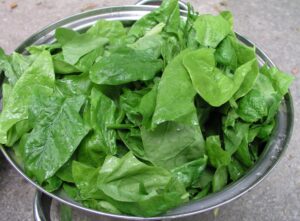 (food transport list),
(food transport list),
Leafy Greens: The Cost of Food Illness
Why are leafy greens such a risk?
These foods did not receive special notice prior to 2009. However increased public demand for salads and sandwiches increased the food supply and use. Large muti-state illness outbreaks, spinach in particular, raised awareness of the food safety risks. The risks inherent in processing (water quality in irrigation and cleaning, hygiene in harvesting and handling), caused the government to reevaluate these foods. As a result, The United States Food and Drug Administration (FDA) recommended ordinance and code now includes leafy greens* as a TCS (time/temperature control for safety) food. Further, effective in 2026, leafy greens are included on the FTL requiring more stringent lot identification information.
Costs of food illness from leafy greens
A study summarized in the Food Safety News (5/24/24) suggests that the impact from leafy greens on foodborne illness concerns is significant. The findings reveal that leafy greens are attributed to up to 9.18 percent of foodborne illnesses caused by identified pathogens, with an estimated annual incidence of up to 2.3 million illnesses in the United States.
Furthermore, the economic cost of these illnesses is substantial, reaching up to $5.278 billion annually. The most common pathogens associated with leafy greens include Norovirus, Shiga toxin-producing Escherichia coli (STEC), Campylobacter, and nontyphoidal Salmonella. Among leafy greens, lettuce accounts for the highest percentage of outbreaks, illnesses, and costs.
Notably, romaine lettuce is particularly significant, with nearly 20 percent of Shiga toxin-producing Escherichia coli O157:H7 illnesses in the United States linked to romaine consumption. This translates to an estimated 12,496 illnesses and $324.64 million in costs annually.
Conclusions:
1. Check supplies and suppliers carefully and regularly. If possible, visit your suppliers and processors to audit how they harvest and process. Review their procedures for safe irrigation, wastewater disposal and employee hygiene. Review their inspections and certificates regularly. Inspect incoming shipments carefully for sanitation problems (soil, cross contamination, insects). Avoid the use of lock box deliveries or where the supplies cannot be inspected immediately.
2. Romaine lettuce is a difficult leafy green to clean. Not surprisingly, it is a significant cause of illness in this study. Clean all deliveries carefully and promptly, storing them in clean and sanitized containers. Produce with surface moisture should receive careful attention, as the moisture can carry bacteria. Consider the use of a produce wash to reduce bacterial loads.
Journal of Food Protection V. 87 (6) June 2024 Foodborne Illnesses from Leafy Greens in the United States: Attribution, Burden, and Cost
Xuerui Yang, Robert Scharff
(*) Leafy greens is a large food family, including several types of lettuce, kale, arugula, cabbage, endive, spring mix, spinach, chard, turnip greens. They are not considered TCS if the core remains intact. The food must be cut, shredded sliced, chopped or torn.
